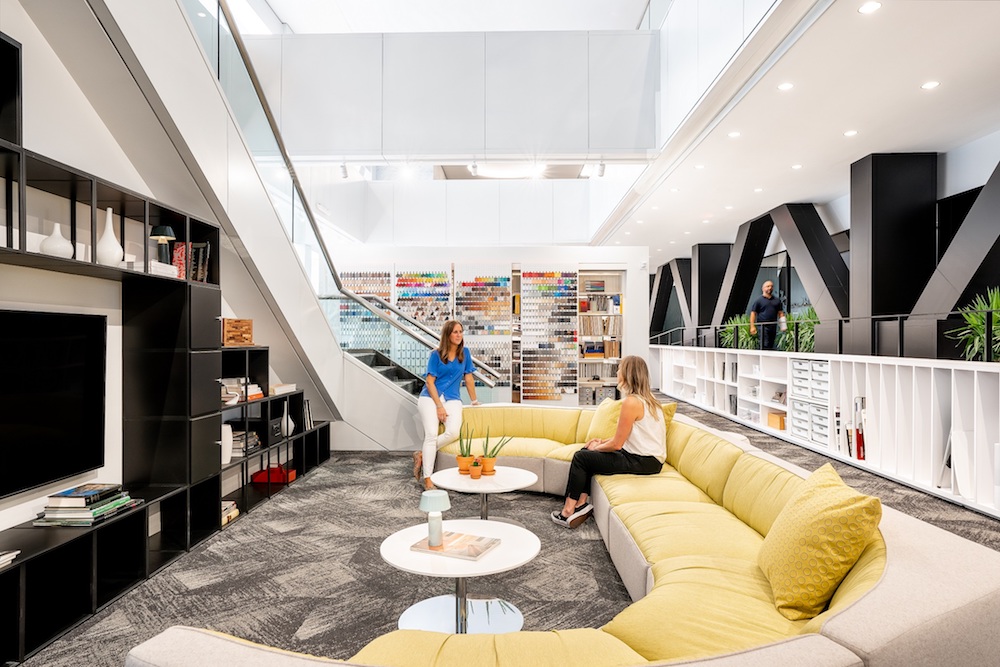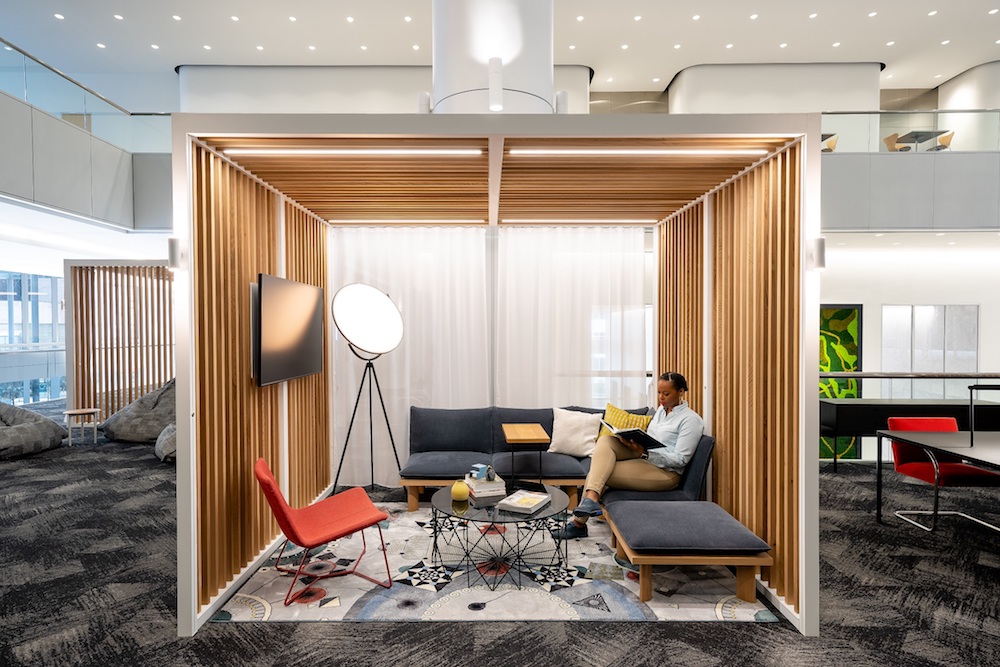Gensler’s Sharon Steinberg shares some key considerations to creating a fully inclusive and supportive workplace with wellness as the focus.

Design must solve the problem of opportunity
– Art Gensler
As quarantine restrictions have lifted, and companies around the world are bringing their people back to the workplace, we have an extraordinary opportunity. In this moment, we get to redefine how the workplace supports – and in some instances transforms – work culture to the benefit of our businesses and people.
While some employees are eager to get out of their makeshift home offices, many are anxious and feel like they have re-entered a foreign land formerly known as their workplace. They find themselves amidst shifting expectations from employers and managers, and unfamiliar rituals such as health check-ins and desk reservation systems.
Our clients — with support from their real estate, human resources and technology teams — have made great strides to implement policies and technology to support a safe hybrid workplace. In many cases, this re-examination of the “old way” is triggering new and inspiring workplace design.
During the pandemic, our workforce has been amazingly resourceful and adaptive to the work at home environment and setting up their home workspace, as well as leveraging great personal agency. This control over work life, not necessarily the specific scenario or work mode, will persist long after the pandemic is a distant memory. This action can be maintained through choices and options which promote health and wellbeing, and the spaces within the office that support them.

Successful workplaces are no longer just a place to find a desk. The office is a goal-driven ecosystem where employees come to practice, to develop professionally, and to feel like they belong to a group with a larger purpose. It’s a combination of place and policy that empowers employees to thrive both physically and mentally, to the benefit of collective goals and success for the business.
We design positive workplace ecosystems that are flexible and can support key aspects of a strong corporate culture including employee wellbeing, collaboration, and mentorship. To align with the goals of employees, direct and regular feedback from the workforce is needed to understand how the workplace can provide appropriate support.
Throughout the past year, we uncovered common traits from our workplace design portfolio, which inform trends and solutions to buffer the challenges of workplace re-entry: How do we develop a sense of intentionality and consciousness around our work and personal lives? How do we entice employees back to the workplace and into the “next normal”?
Following are key considerations to creating a fully inclusive and supportive workplace with wellness as the focus:
A Focus on Employee Physical and Mental Wellbeing
Positive solutions for returning to the workplace are uniquely tethered to the individual employee and their sense of wellbeing. Now, more than ever, our workforce is bringing their “whole selves” to work. Although pre-pandemic workplace design was making room for individual preferences, we are seeing a measurable increase in flexibility and choice being given to workers.
Whether through their built space or via site selection in a building that offers the right mix of amenities, companies are now offering more than standard fitness amenities. Walking paths, both indoors and out, encourage movement and foster employee efforts to be active. This shift is also indicative of a new culture that gives people time to prioritize physical activity within the workday.
Policies and workday flexibility are increasingly allowing for a diversity of thought around rest and recovery for employees. As a result, we are seeing more requests for spaces such as yoga and meditation rooms, and other designated quiet areas.

Collaboration and Teamwork as Design Drivers
Workplaces that are designed to promote employee connection help establish stronger teams and a sense of community. Offices are now being created to foster communication and increase the exchange of ideas.
Consider creating multipurpose spaces that go beyond traditional conference and meeting rooms, including elevator lobbies and stairwell landings as areas for employees to interact away from their work.
Even copy rooms can be reconfigured to facilitate interactions as companies are starting to recognize this in-between interaction between their people as a positive that contributes to their overall sense of wellbeing.
Built-In Mentoring Support
Employees need frequent touch points and engagement with managers, peers and their direct reports in order to do their jobs effectively. Workplace designers need to pay close attention to pathways that provide mentorship for equity, many of which have fallen away with remote work.
For example, incorporating a flexible seating system that can be customized for on-the-job training in groups, one-on-one sessions or access to resources. Some of our smaller and startup clients are creating their workplaces within larger innovation hubs so their employees can easily take advantage of legal expertise or matchmaking opportunities with venture capitalists.

The ability to bring our whole and healthy selves to the office is a worthy and obtainable goal in this time of transition. By gaining employee feedback (early and often), employers can help successfully guide their teams through office re-entry, as well as make lasting and positive changes in the workplace that foster a thriving, wellness-first culture.

